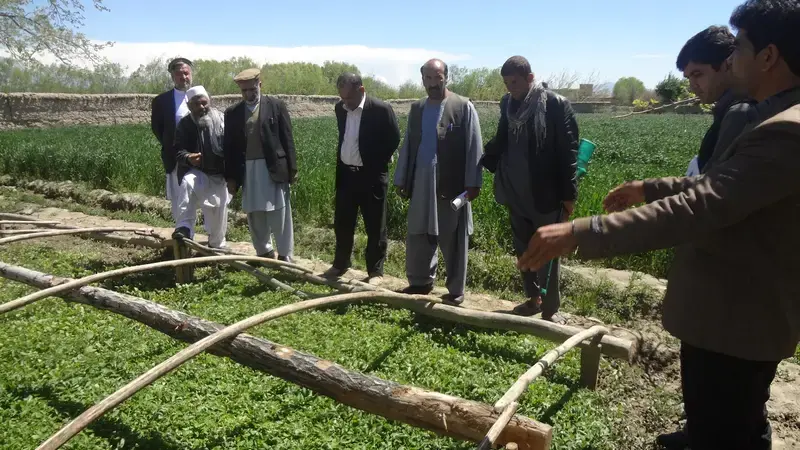IFAD-Afghanistan-ICARDA collaboration under CLAP Lauded by the Afghan Minister of Agriculture

The Afghan Minister of Agriculture, Irrigation and Livestock, H. E. Mr. Assad Zamir, lauds ICARDA’s work through the Community-based Agriculture and livestock Project (CLAP), funded by the International Fund for Agriculture Development (IFAD). The Minister highlighted the progress made in 2015 and ICARDA’s planned innovative activities for 2016 in his online post which reaches wide audiences in the country.
CLAP is a research and development initiative of the Afghan Ministry of Agriculture Irrigation and Livestock (MAIL) aiming to improve food and feed crops for the farmers and seed systems with the help of ICARDA’s research and capacity development expertise. The initiative, started in 2014, has introduced new improved varieties of wheat and legume crops with improved crop management practices to the farmers in Parwan, Kabul and Logar provinces.
Some 255 demonstration plots of wheat, mung bean and lentil were set up in these provinces which have served effectively for training and encouraging farmers through field days. The demo plots showed good results for crop adaptability and yields.
For 2016, ICARDA has established 120 new wheat demo plots in eight districts of the three provinces, to upgrade and improve the farmers’ skills in partnership with MAIL professional staff.
One of the CLAP’s innovations has been a simple metal tool for sowing seed which can be pulled by oxen. Since the tool is crafted by local ironsmiths, farmers can adapt it to their needs, enabling them to switch easily from the traditional sowing method to the new time-efficient and effective tool.
With positive feedback from farmers and state sectors, the Afghan Ministry appreciated ICARDA’s efforts and commitment to improve the livelihoods of Afghan farmers, as well as build capacity of local and national staff and agriculture professionals.
The CLAP initiative is restoring and modernizing Afghanistan’s agricultural sector and helping farmers improve both crop and livestock productivity.
